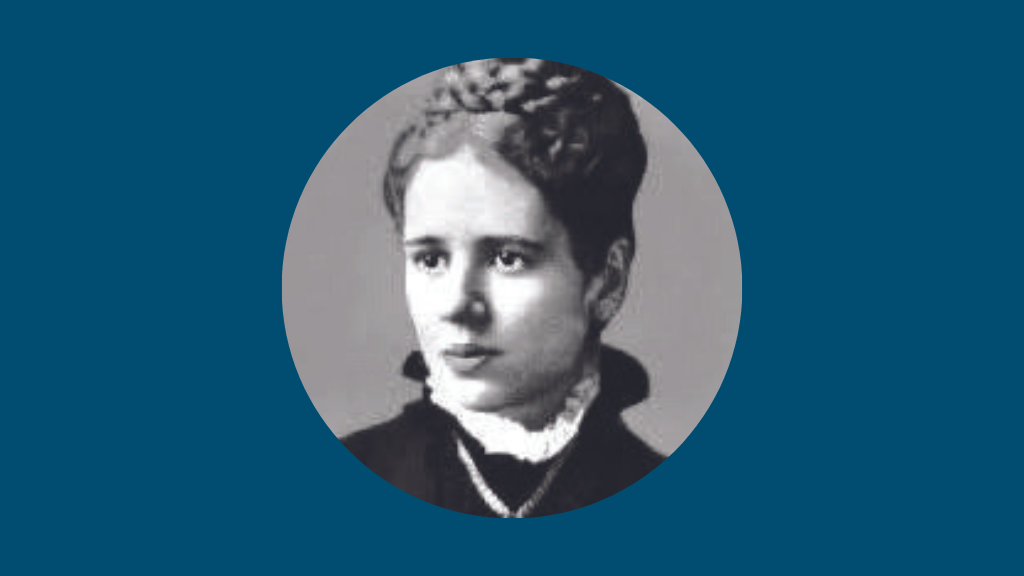
By Jane M. Gardner
presiding evangelist
Our journey is often intensely personal as we navigate the Lenten wilderness. What does Jesus mean to me? We turn to a hymn with its roots in the evangelist fervor of nineteenth- century England, “I Love to Tell the Story” by Katherine Hankey. The hymn speaks from her personal perspective, expressing statements of belief and faith that resonate today.
James Sydnor in his book, Hymns and Their Uses, said, “The final arbiter of greatness in a hymn is the test of long satisfactory use by the church” (Agape, 1982, page 25). “I Love to Tell the Story” is such a hymn. It has appeared in hymnals around the world since the mid-nineteenth century and continues to be included in hymnal collections into the twenty-first century. According to www.hymnary.org, it is published in more than 1,150 hymnals, including Community of Christ Sings.
The poet, Katherine Hankey, was the daughter of a wealthy English banker. Though her family members were prominent in the Anglican Church, she and her father associated with the Clapham sect of William Wilberforce, located in Clapham, Surrey, England. This group is said to have had a profound effect on British society through championing the abolition of slavery and striving to improve the lot of England’s working classes.
Hankey organized Sunday-school classes throughout London for children and published Christian-education material, using proceeds from her writings to support mission causes.
In 1866, at the age of 30, Hankey became severely ill. During a long, bedridden convalescence, she wrote an extended poem focused on the life of Christ. Part 1 was entitled, “The Story Wanted,” which later led to the hymn, “Tell Me the Old, Old Story.”
This text represents Hankey’s enthusiastic, evangelistic desire to share her Christian conviction with others. The wide use of the song often is credited to the simplistic language and emotional affirmation of how blessed she felt by sharing her testimony of Jesus.
Part 2, entitled “The Story Told,” eventually was condensed into four stanzas and published as “I Love to Tell the Story.” (Hankey’s entire poem is at www.Wholesomewords.org/poetry/oldstory.html.)
In 1867, after “I Love to Tell the Story” was shared at a large YMCA gathering in Montreal, Canada, it gained wide popularity. William G. Fischer, a Philadelphia, Pennsylvania, USA, musician and piano dealer (1832–1912), felt motivated to set the poem to music. He is credited with adding the refrain to the song. Fischer’s version was included in the influential hymnal, Gospel Hymns and Sacred Songs (1875), assuring its fame.
This text represents Hankey’s enthusiastic, evangelistic desire to share her Christian conviction with others. The wide use of the song often is credited to the simplistic language and emotional affirmation of how blessed she felt by sharing her testimony of Jesus. As you sing her song, you may find it odd that the “Old, Old Story” is not really told in the text. Instead, Hankey shares her mission zeal for telling the story of Jesus, a calling she demonstrated in many ways, including missionary trips to South Africa as a nurse. Even toward the end of her life, Hankey was organizing Bible classes in local prisons.
The song falls within the gospel-song tradition. In an article on hymn interpretation, Mary Kay Beall, describes six attributes that keep gospel songs relevant and helpful.
A gospel song is:
- a historic entity. We honor the past and sing in solidarity with earlier Christians.
- a theological statement. The texts reflect a literal and emotional message of salvation that was genuine for many nineteenth-century singers, including a “Jesus and me” focus.
- an outreach method. Arising from the evangelistic tent meetings, the gospel songs were primary tools for reaching the “lost.”
- a memory album. Gospel songs are powerful, shared community experiences, joining saints old and new. They are important links to the past.
- a medium of prayer and meditation. Singing “I Love to Tell the Story” can be a spiritual practice, helping us enter into God’s presence.
- a community builder. Singing together is a demonstrative way of forming sacred community.
—adapted from “Hymn Interpretation,”
Mary Kay Beall, The Hymn, Volume 56, No. 2, spring 2005
Even as we explore the songs and texts in Community of Christ Sings, it is good to be reminded of the gospel songs from the past and our connection with historic movements of the Spirit and the ministry that resulted. May such singing inspire us with renewed enthusiasm to tell the story of Jesus!
